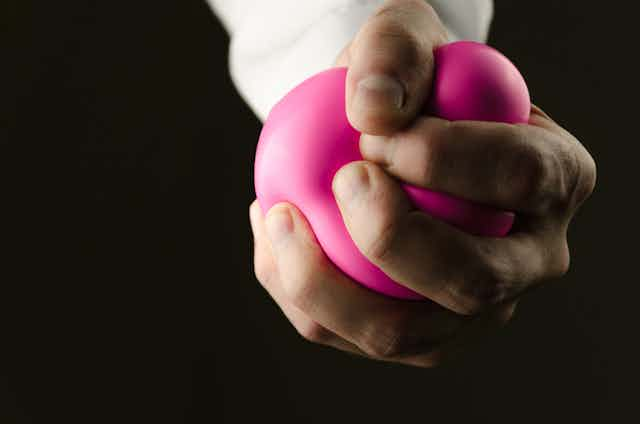Stress covers a broad spectrum of experiences, ranging from a bad day at the office to the psychiatric trauma of military combat. It is this very imprecision that made stress such a useful concept.
We use stress as a description of our emotional state, a medical diagnosis and a rationale for absenteeism. Yet, until the late 20th century, awareness and understanding of the concept were largely limited to doctors and academic researchers, as my research into how the experience of stress changed in post-war Britain shows.
From the 1960s onwards, newspaper reporting on stress began to appear regularly as part of an expansion of health-related stories. These articles suggested stress as an explanation for people’s responses to the challenges of a rapidly changing world.
Only for the elite
Initially the message was clear: people doing important or difficult work under pressure were particularly susceptible. The Daily Mirror carried stories about the risk to students from elite universities and suggested that “the boss got more ‘stress disorders’ than those working under him”. Meanwhile the Guardian labelled stress “the affliction of successful indispensables” and told its readers about a new executive retreat at Ruthin Castle in Wales, aimed at businessmen working under pressure.
Retreats like Ruthin, it argued, were becoming status symbols of executive life. These views were based on a long tradition linking “brain work” with nervous conditions, stretching back to the 19th century medical condition of neurasthenia suffered by a supposedly oversensitive elite.

Stress for everyone
While associations between stress and executives persisted, the early 1970s saw the democratisation of stress through an ever-increasing stream of newspaper stories about new susceptible groups. The Daily Mirror identified manual workers on the production line and housewives trapped in noisy tower block flats. One article explained the “seven ages of stress” from toddler to pensioner, while others identified stress as the “big danger to your health” and “a killer”.
The reports made it clear that stress was something that anyone might experience. And by 1988 trade union-funded research claimed to “explode the myth of stress as an executive disease”, arguing that manual and clerical workers were far more likely to suffer stress.
Throughout the 1980s and 1990s a continual flow of media stories identified more susceptible groups and new varieties of stress, such as “burnout”. Readers were receiving a very clear message about the symptoms of stress and how to apply the label to their own experiences.
This did not go unnoticed. Two writers for the social research organisation, Mass Observation, reflected on this influence in the 1980s. One described her job as a teacher as “very stressful”, but also suggested that the media made people much more aware of their health, as she was far more conscious of how she felt than five years previously. The other, a medical secretary, blamed increased “neurosis and ill-health” on attitudinal change, explaining that people no longer dealt with their own problems, but were encouraged to “seek help, from the vicar, social services, the doctor and Auntie Minnie on the woman’s page”.
Her view neatly encapsulated the cultural shift that saw Britons exchange the stoicism and self-sufficiency of earlier decades for an expectation that professional help was now needed for a range of everyday occurrences, including those causing stress. It also acknowledged the media’s role in both encouraging adoption of this view and supposedly offering help.
The availability of stress as an explanation for people’s responses to many different everyday situations led to its increased adoption by individuals, organisations and the state, so that by the end of the century, stress accounted for millions of lost working days.
Stress became useful because it could apparently explain much about people’s responses to late 20th century life. But such widespread popular usage has also rendered it largely empty of meaning. While labelling oneself as “stressed” is a useful starting point, it is perhaps wise to go beyond stress to think about what you are actually feeling and why.

